Japanese anti-aircraft defense during the Second World War. Part 2
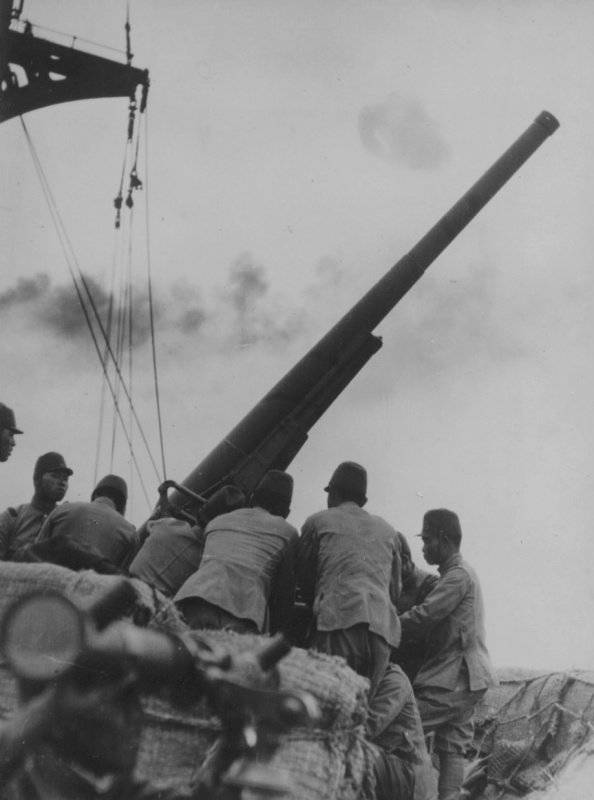
In 1914, the arsenal of the Japanese fleet received a 76,2-mm “dual-use” type 3 gun. In addition to fighting the “mine fleet”, another purpose of the gun was shooting at air targets.
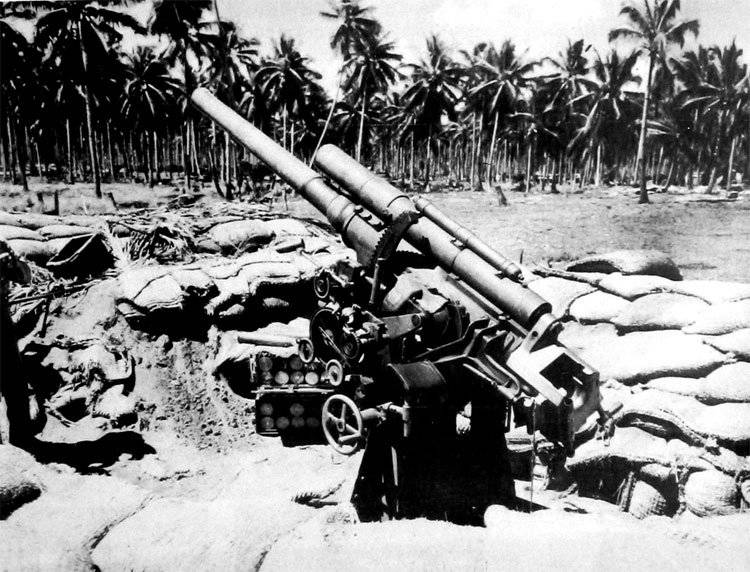
By the beginning of the Second World War, these guns for the most part moved from the decks of Japanese warships to the shore. Type 3 guns were actively used in the defense of the islands. And although theoretically they could fire at air targets with a rate of fire of 10-12 shots / min at an altitude of up to 7000 m, in practice the effectiveness of such fire was low due to the lack of fire control devices and centralized guidance. That is, these guns could only conduct barrage fire.
The first specialized anti-aircraft gun in the Japanese armed forces was the 75-mm anti-aircraft gun Type 11. The designation of this instrument indicates that it was put into service in the 11 year of the reign of Emperor Taisho (1922).
A number of borrowings from foreign models were implemented in the gun, including many parts copied from the British 76,2-mm anti-aircraft gun QF 3-in 20cwt.
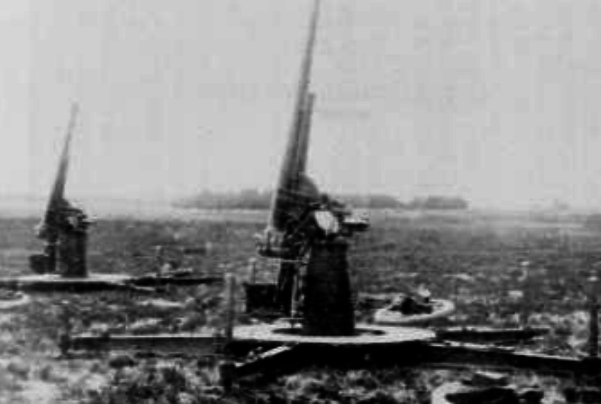
However, due to the lack of experience, the weapon turned out to be expensive and difficult to manufacture, and the accuracy and firing range turned out to be low. Reach height at an initial speed of 6,5-kg 585 projectile m / s was about 6500 m. A total of 44 anti-aircraft guns of this type were produced.
Despite their small number, Type 11 anti-aircraft guns took part in a number of armed conflicts and remained in service at least until 1943.
In 1928, the 75 mm Type 88 anti-aircraft gun was put into production. Compared to the Type 1928, this was a much more advanced gun, although the caliber remained the same, it was superior in accuracy and range to the Type 88. The gun could fire at targets at an altitude of up to 2588 m, with a rate of fire of 11 rds / min.
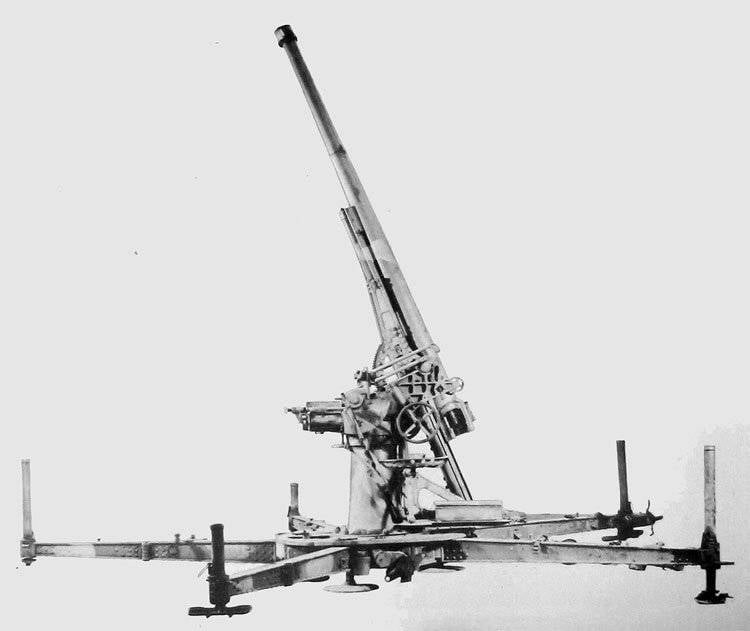
However, this tool was not devoid of flaws. Especially inconvenient for the deployment of anti-aircraft guns in a combat position was such a structural element as a five-beam support, in which it was necessary to push four beds and unscrew five jacks. The dismantling of two transport wheels also took time and time to calculate power.
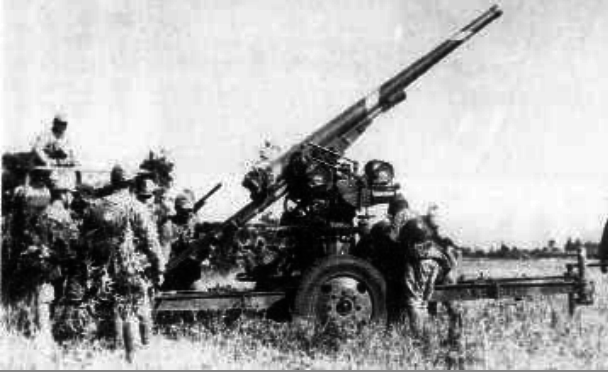
But the main drawback of the gun was already revealed during the war - it had a low reach in height. Anti-aircraft gun Type 88 was ineffective against the American B-17 bombers and completely ineffective against the B-29.
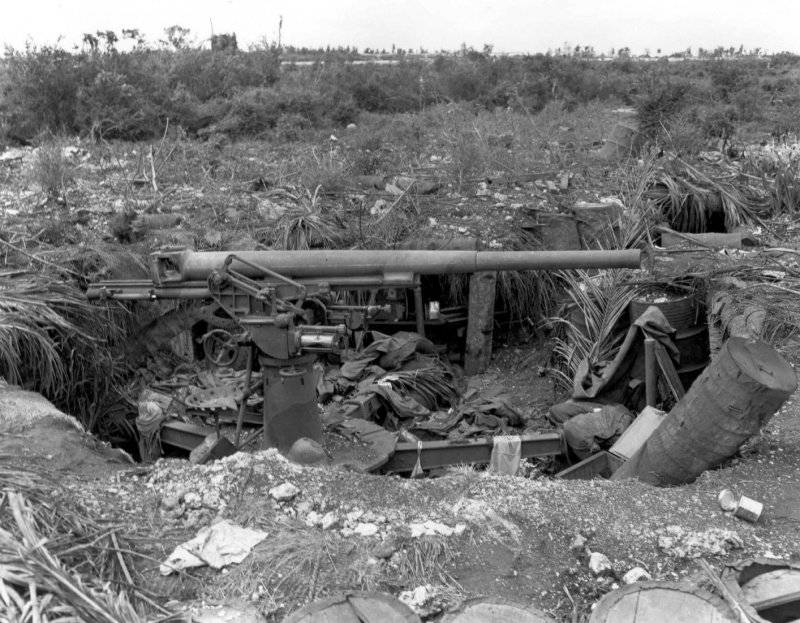
The hope of the Japanese command to use the gun Type 88 as a powerful anti-tank weapons also did not materialize. When the American troops and equipment landed on the Pacific Islands, the coastal zone was so carefully and generously handled by the assault aviation and ship artillery shells that bulky guns simply could not survive.
During the fighting in China, Japanese troops captured 75 mm Bofors M29 guns. After it turned out that these guns were significantly superior to the Japanese Type 88 in terms of service and combat characteristics, it was decided to copy the Bofors M29. The production of a new anti-aircraft gun, designated Type 4, began at the end of 1943. The height of the fired targets increased to 10000 m. The gun itself was more technologically advanced and more convenient to deploy.
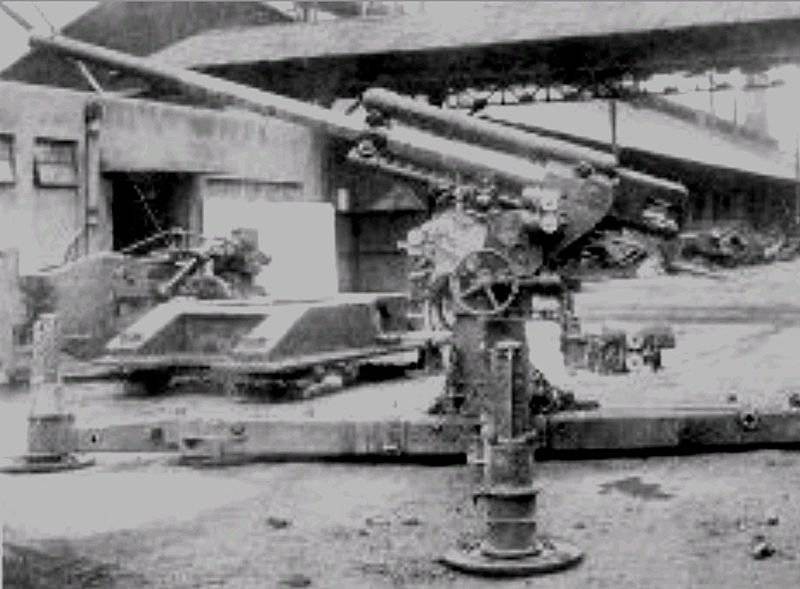
Due to the incessant raids of American bombers and the chronic shortage of raw materials, it was possible to produce about 70 75-mm anti-aircraft guns Type 4. All of them were located on the territory of the Japanese islands and for the most part survived to surrender.
In addition to their own 75-mm anti-aircraft guns, the Japanese imperial army used British 76,2-mm anti-aircraft guns QF 3-in 20cwt captured in Singapore, as well as single copies of the American 76,2-mm anti-aircraft guns М3. However, by the end of the 30s, both of these tools were considered obsolete and did not represent much value.
During the Second Sino-Japanese War, in Nanjing, Japanese troops captured German-made 88 mm naval guns. Realizing that the 75-mm Type 88 anti-aircraft guns no longer fully meet modern requirements. The Japanese military leadership decided to put this weapon into production. It entered service in 1939 under the designation Type 99. About 1939 guns were produced between 1945 and 1000.
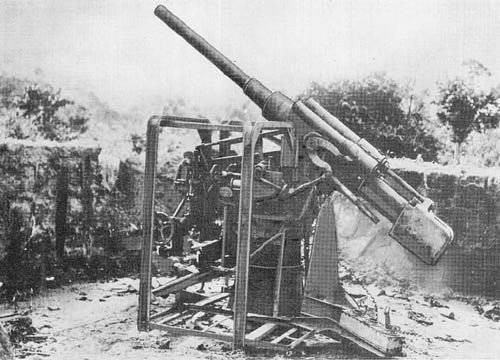
Anti-aircraft guns Type 99 significantly superior to 75-mm anti-aircraft guns.
A fragmentation projectile weighing 9 kg left the barrel at a speed of 800 m / s, reaching a height of more than 10000 m. Fighting rate of fire was 15 rds / min.
For 88-mm anti-aircraft guns Type 99, a convenient for transportation carriage was not so designed. In the case of redeployment, dismantling of the weapon was required, therefore 88-mm guns of type 99, as a rule, were placed in stationary positions along the coast, simultaneously performing the functions of coastal defense guns.
By the time of the start of hostilities in the Pacific theater, the Japanese air defense had about 70 100-mm anti-aircraft guns Type 14. The gun was commissioned in the 14 year of Emperor Taisho's reign (1929 according to the Gregorian calendar).
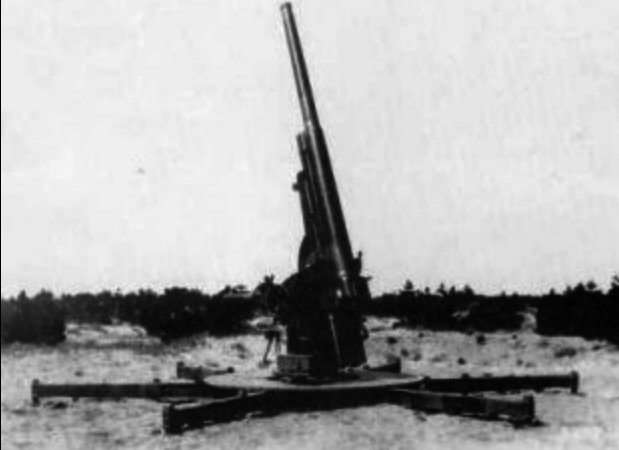
The height of the hit targets 16-kg shells Type 14 exceeded 10000 m. The rate of fire 8-10 shots / min. The mass of the gun in the combat position of about - 5000 kg. The base of the gun was supported by six legs, which were leveled with jacks. It took 45 minutes to remove the wheel travel and translate the gun into a firing position.
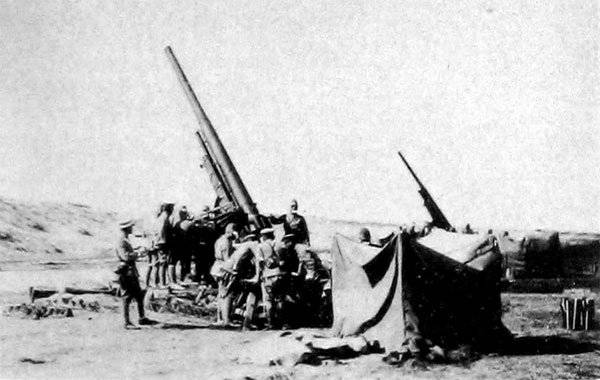
The advantage of combat performance of 100-mm guns Type 14 over 75-mm Type 88 was not obvious, but they themselves were much heavier and more expensive, and soon 75-mm anti-aircraft guns were replaced in the production of 100-mm. During the war, all guns of this type were deployed on the island of Kyushu.
In the middle of the 30-s, simultaneously with the beginning of the design of an air defense destroyer squadron in Japan, the development of a new 100-mm anti-aircraft gun began. Already existing sea 127-mm guns did not meet the requirements due to too low height reach and insufficient rate of fire and aiming speed.
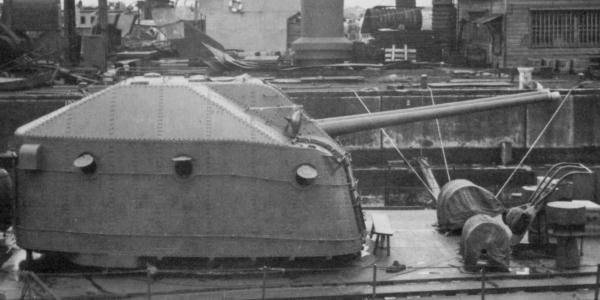
The artillery with two such guns was put into service in 1938, under the name Type 98. Its copies were installed on destroyers of the "Akizuki" type. For arming large ships, the semi-open installation Type 98, the A1 model, was developed, but it was used only on the Oydo cruiser and the Taiho aircraft carrier.
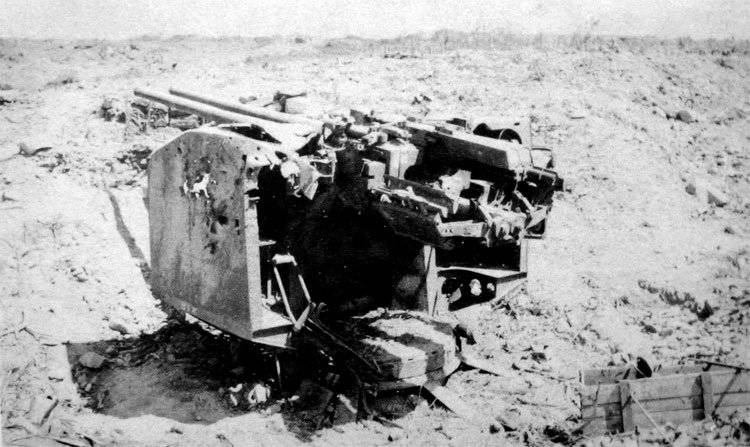
At the beginning of 1945, guns intended for unfinished warships were installed on shore stationary positions to protect against American B-29 strategic bombers. These were not many Japanese anti-aircraft artillery systems capable of effectively counteracting the B-29. However, the effectiveness of anti-aircraft fire was reduced due to the lack of shells with a radio fuse in the Japanese and an insufficient number of PUAZO and radar.
In the framework of military-technical cooperation in 1941, Japan received from Germany technical documentation and samples of the 10,5-cm Flak 38 anti-aircraft gun from Rheinmetall. These were quite advanced guns for their time, capable of firing at targets at an altitude of more than 11000 m. But for a number of reasons, mainly due to the overload of factories with military orders and a lack of raw materials, their production was never established. Based on the Flak 38, Japan developed the Type 105 1-mm anti-tank gun, the production of which was limited to single copies.
In 1927, 120-mm gun type 10 (10 was the year of Emperor Taisho reign), which was developed as a coastal defense and anti-aircraft gun, was put into service. Prior to this, there was a naval version of the gun, part of the naval guns was converted into anti-aircraft. Totally more than 2000 guns were produced. Type 10.
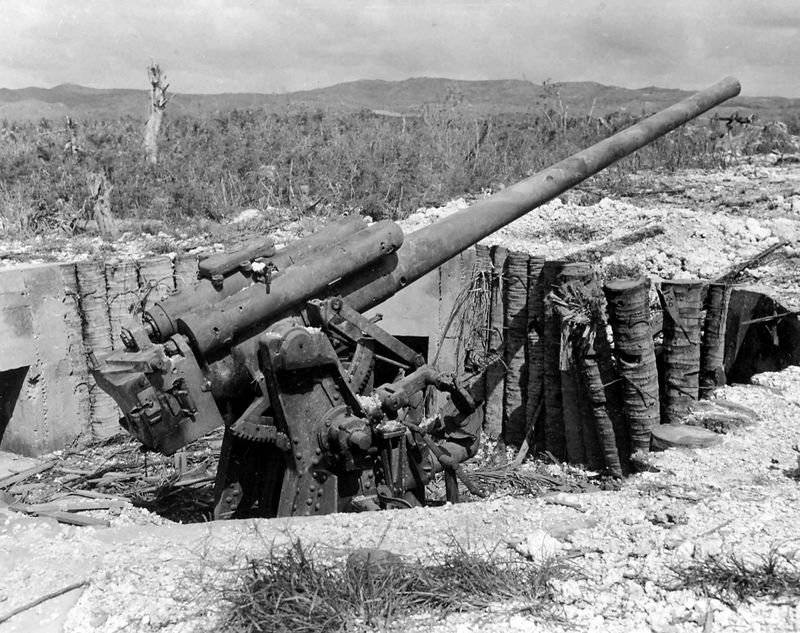
The 8,5 t gun was installed in fixed positions. Rate of Fire - 10-12 rds / min. The initial velocity 20 kg projectile - 825 m / s. Reach height 10000 m.
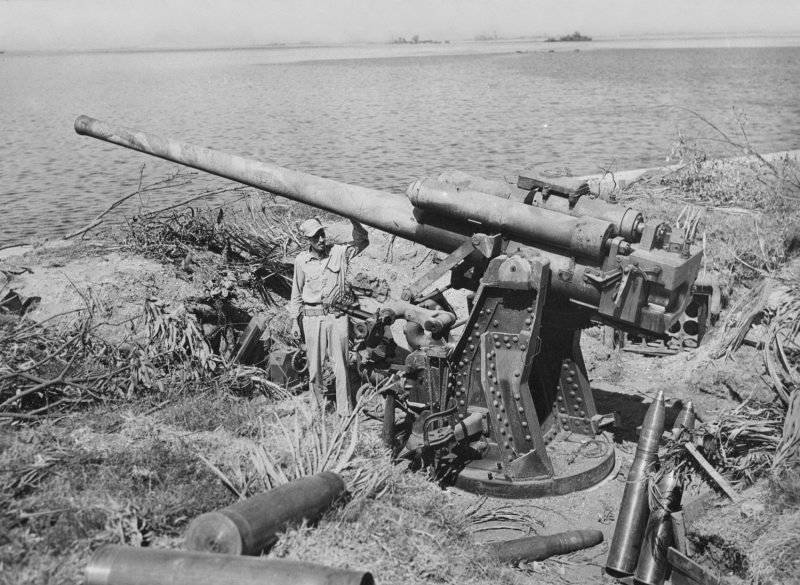
In 1943, the production of the 120-mm Type 3 anti-aircraft gun began.
The leadership of the Japanese Imperial Army had high hopes for a new anti-aircraft gun. It was supposed to change the 75-mm anti-aircraft guns in mass production, the effectiveness of which was already insufficient.
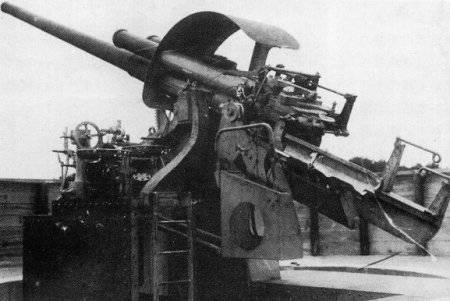
120-mm anti-aircraft gun Type 3 was one of the few guns in the air defense, which could effectively bombard the bombers B-29, carrying out destructive attacks on cities and industrial enterprises in Japan.
The fragmentation projectile with a mass of 19,8 kg was accelerated in the barrel with a length of 6,71 m (L / 56) to 830 m / s, which ensured the possibility of firing targets at heights greater than 12000 m.
However, the gun itself turned out to be quite massive, the weight in the combat position approached the 20 t, which seriously reduced the mobility of the system and the ability to quickly relocate. These instruments, as a rule, were deployed on prepared stationary positions. The guns were mainly deployed around Tokyo, Osaka and Kobe.
Anti-aircraft 120-mm guns Type 3 proved to be quite effective, some of the batteries mated with radar.
In 1944, Japanese specialists managed to copy and adjust the production of the American SCR-268 radar. Earlier, on the basis of the British radar captured in Singapore in October 1942, the production of the 41 radar was launched to control anti-aircraft fire.
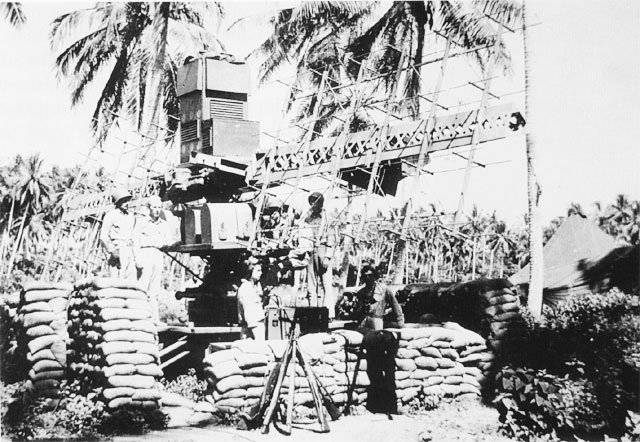
The station could see the aircraft and adjust the anti-aircraft artillery fire by the gaps at a distance of up to 36 km, with an accuracy of the range 180 m and the azimuth 1,1 °.
With the help of 120-mm anti-aircraft guns Type 3 Japanese managed to knock down or seriously damage around 10 American B-29. Fortunately for the Americans, the number of these weapons in Japan’s air defense system was limited. From 1943 to 1945, the year managed to produce only about 200 anti-aircraft guns.
After the start of regular raids by American bombers, the Japanese command was forced to attract naval 127-mm guns, type 89, to enhance the air defense of ground objects.
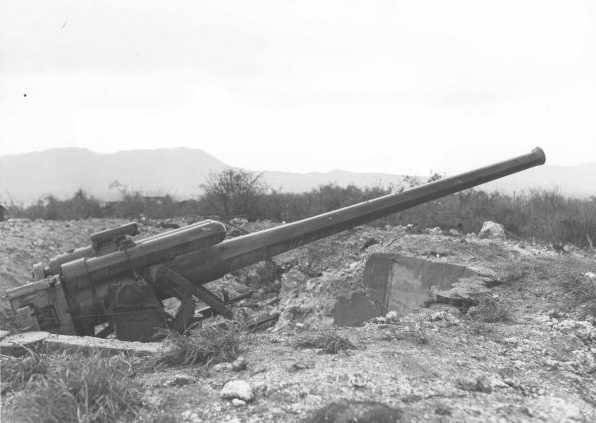
The guns in the mass position of more than 3 tons were installed in stationary fortified positions. A projectile with a mass of 22 kg and an initial velocity of 720 m / s could hit air targets at altitudes up to 9000 m. The rate of fire is 8-10 rds / min.
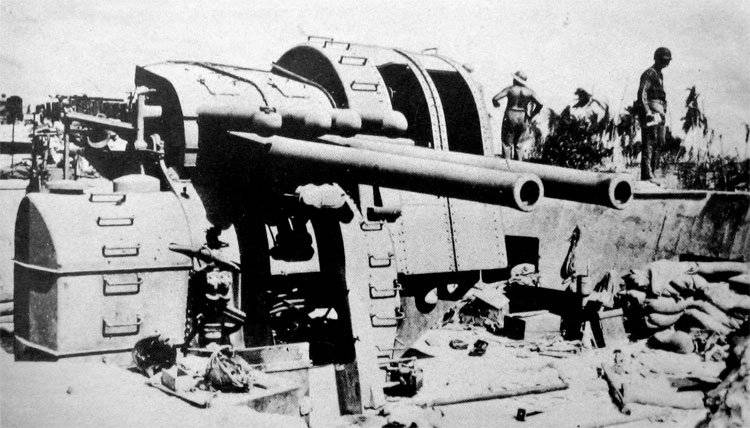
In total, more than 300 127-mm guns were permanently mounted on the shore. Most of them were located in areas of naval bases or along the coast, thus providing anti-amphibious defense.
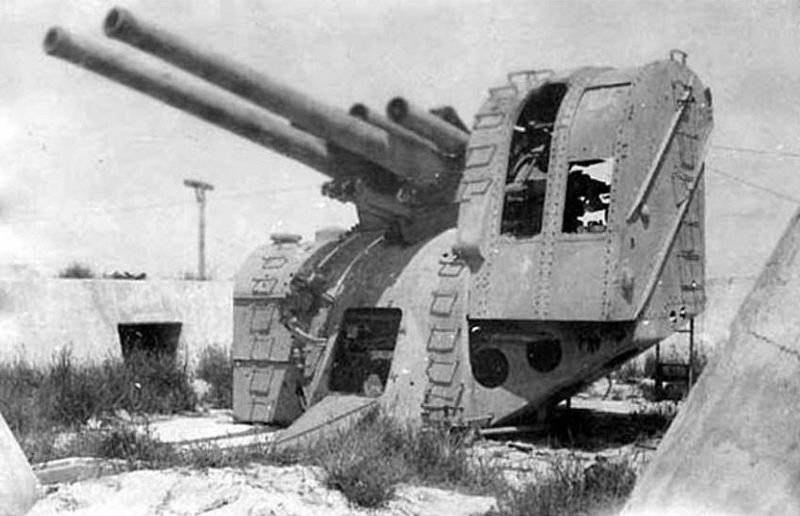
A part of the guns was installed in two-gun naval towers protected by anti-shatter armor.
The most powerful Japanese anti-aircraft gun was 150-mm Type 5. It should have been more efficient than the 120-mm Type 3. Its development began when it turned out that the B-29 are capable of flying at altitudes above 10000 m.
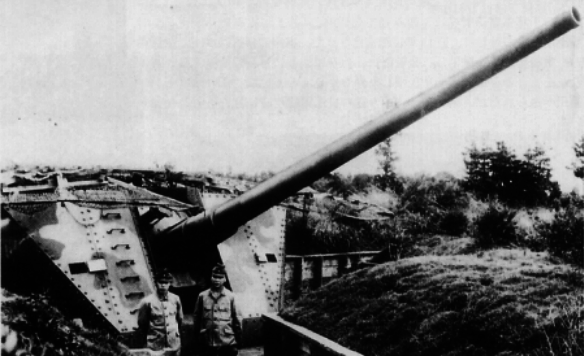
To save time, the project was based on the 120-mm guns Type 3, the caliber and dimensions of which were brought to 150-mm, with a corresponding increase in firing range and firepower. The project was completed very quickly, after 17 months a new anti-aircraft gun was ready for firing.
The initial speed of the 41-kg projectile, left the 9-th barrel, was 930 m / s. This ensured shelling targets at altitudes up to 16000. With a rate of fire of up to 10 shots / min.
Prior to the surrender of Japan, they succeeded in producing two guns, which were successfully tested in battle. They were located on the outskirts of Tokyo, in the Suginami region, where on August 1 1945 two B-29 were shot down. Until the end of the fighting, American bombers avoided flying over this area, and these powerful anti-aircraft guns no longer had a chance to prove themselves.
In the post-war American materials of the investigation of this incident, it is said that such effective shooting is largely due to the fact that these two guns were associated with a Type 2 fire control system. Target designation and shooting adjustment was carried out by several radars and optical rangefinders, which made it possible to accurately track the coordinates of the target. It was also noted that the shells of the 150 mm Type 5 guns had twice the radius of destruction compared to the 120 mm Type 3.
In general, assessing the Japanese anti-aircraft air defense, we can note their diversity. This inevitably created major problems in the supply, maintenance and preparation of calculations. Most of the anti-aircraft weapons were frankly outdated and did not meet modern requirements.
Due to the lack of equipment equipped with fire control systems and air target detection stations, a significant part of the Japanese anti-aircraft guns could only conduct unaffected, barrage fire.
The Japanese industry was unable to produce effective anti-aircraft guns and fire control systems in the required quantity. Among the leading countries participating in the Second World War, Japan's air defense systems turned out to be the smallest and most ineffective. This led to the fact that American strategic bombers carried out raids in the daytime with virtually impunity, destroying Japanese cities and undermining industrial potential. The apotheosis of these daytime raids was the nuclear bombing of Hiroshima and Nagasaki.
Based on:
http://www.allworldwars.com
http://www.navweaps.com
http://www.navyfield.com
Information